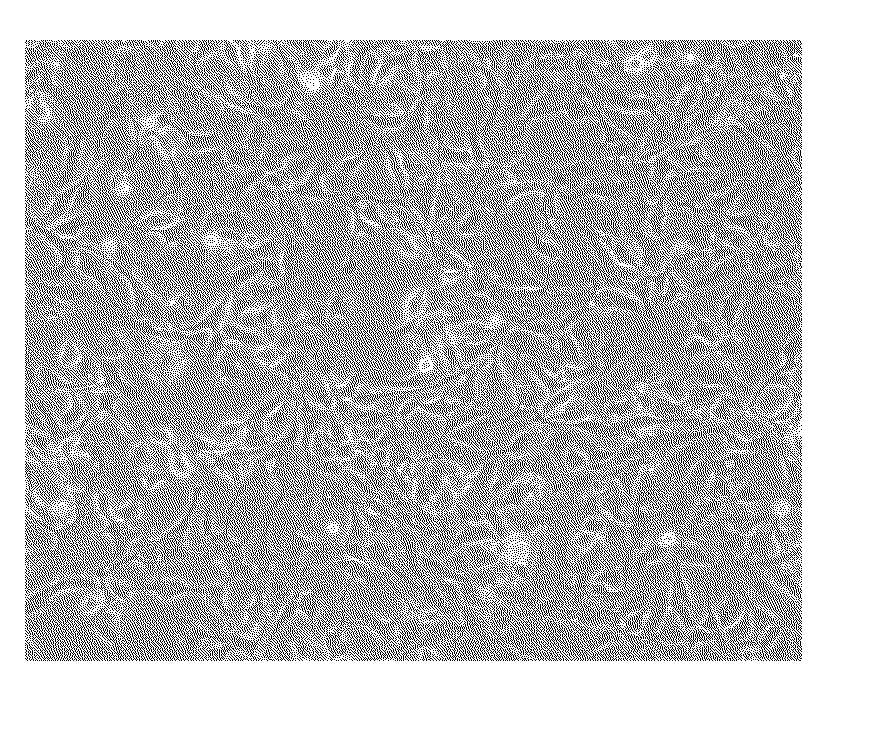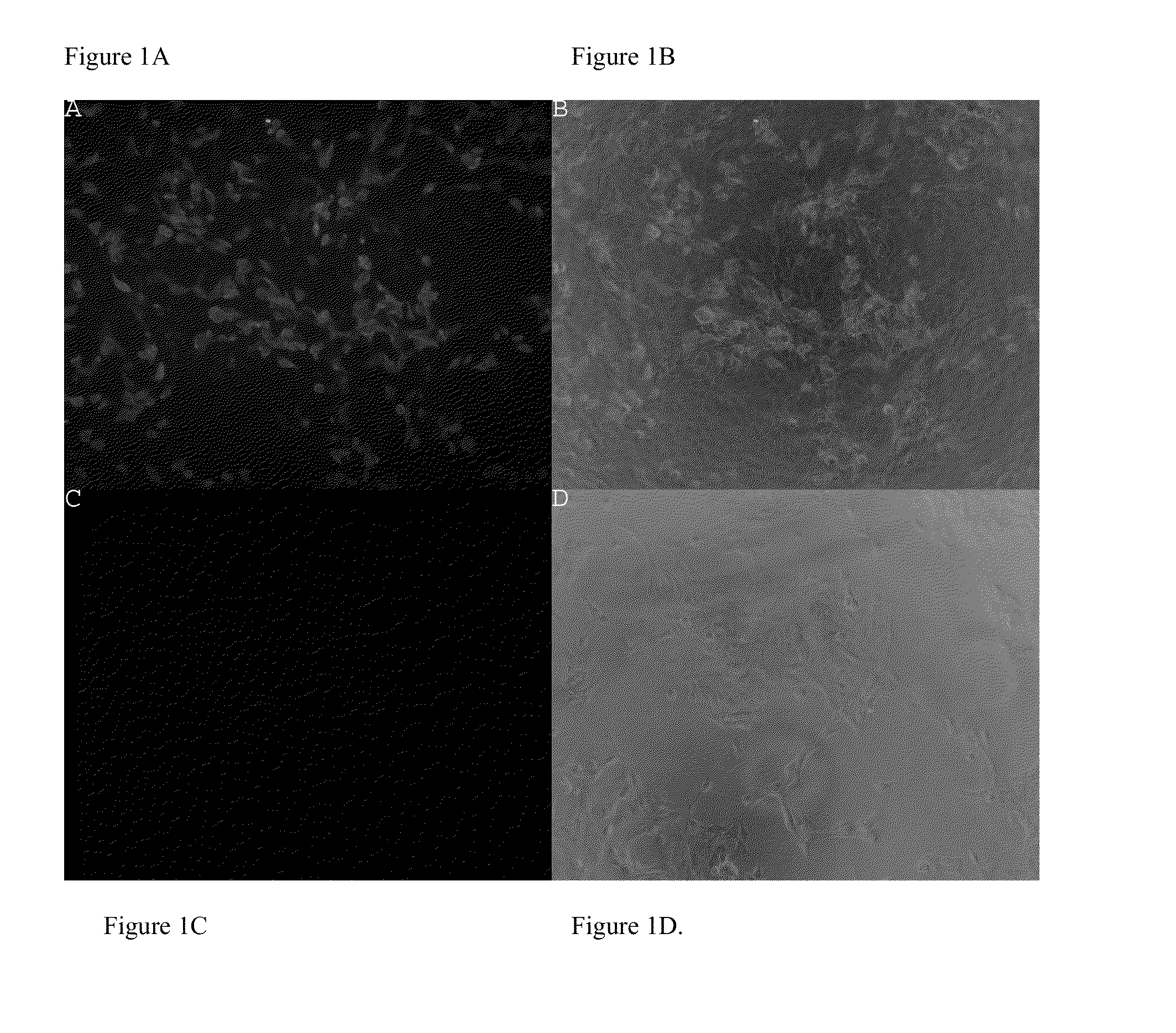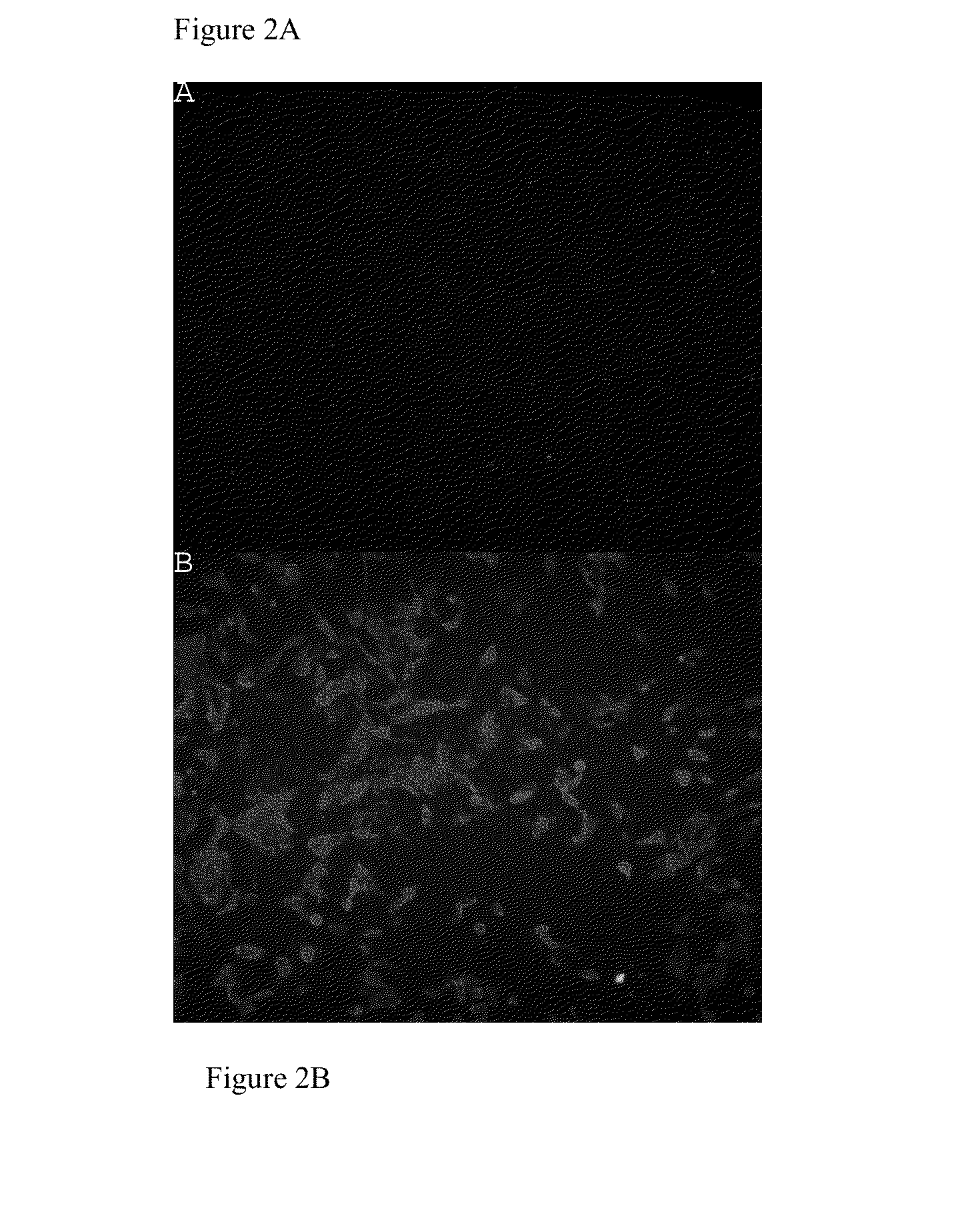Monoclonal antibodies specific to hemagglutinin and neuraminidase from influenza virus h5-subtype or n1-subtype and uses thereof
a technology of neuraminidase and hemagglutinin, which is applied in the field of monoclonal antibodies specific to hemagglutinin and neuraminidase from influenza virus h5-subtype or n1-subtype and uses thereof, can solve the problems of not being available in a timely manner to assist clinicians and devastation of pandemics
- Summary
- Abstract
- Description
- Claims
- Application Information
AI Technical Summary
Benefits of technology
Problems solved by technology
Method used
Image
Examples
example 1
Production of Hybridomas
[0059]All live wild type H5N1 influenza viruses, except H5N1 / PR8, were obtained from Indonesia. H5N1 / PR8 was obtained from the Center for Disease Control (USA). It is a non-pathogenic recombinant virus that contains the HA and NA genes of an AIV H5N1 virus that infected a human in Vietnam (A / Vietnam / 1203 / 2004). H5N2 (A / chicken / Singapore / 98) and H7N1 (A / chicken / Singapore / 94) were obtained from Agri-Food & Veterinary Authority (AVA) of Singapore. These virus stocks were used to infect 9 and 11 day old embryonated chicken eggs (Chew's Poultry Farm, Singapore) and allowed to replicate for two generations. Then, allantoic fluid was drawn and viral titer was determined using hemagglutinin assay (HA). Inactivated H5N1 (A / goose / guangdong / 97) was used for RNA extraction to amplify HA1 gene by RT-PCR. Madin Darby kidney cells (MDCK, ATCC CCL34) cells were grown in DMEM media with 10% FBS at 37° C. with 5% CO2.
[0060]Purification of the viruses was performed by centrifug...
example 2
[0064]Screening of mAbs by IFA
[0065]Immunofluorescence assay was used to verify the interaction between an antibody and the antigen target. MDCK cells which had been infected with influenza virus (H5N2 (A / chicken / Singapore / 98) or H7N1 (A / chicken / Singapore / 94) overnight were rinsed with PBS-T (0.05% Tween-20 in PBS, pH 7.4) in 96 well plates. The cells were fixed by incubating them in pre-cooled 100% ethanol for 10 minutes. The cells were washed in PBS-T 3 times, then incubated in 1% BSA, PBS-T for 30 minutes to block unspecific binding of the antibodies. They then were incubated with 100 μL of hybridoma culture fluid in wells of 96-well plates for 2 hours at room temperature or overnight at 4° C. The cells were washed with PBS-T and incubated with secondary antibodies, fluorescently labeled goat / rabbit anti-mouse antibodies (DakoCytomation, USA), at a dilution of 1:100 in 1% BSA, PBS-T, for 60 minutes at room temperature. The wells were washed with PBS-T. The PBS-T was discarded and...
example 3
Characterization of H5- and N1-Subtype mAbs
[0070]Isotyping of mAbs.
[0071]Isotyping was performed using a mouse mAb isotyping kit (Amersham Bioscience, England) following the protocol supplied with the kit (data not shown). MAbs 5A5, 6C6, 2D9, 4F8, 1C1, 3B6, 3D4, 8H12, 9C1 and 3H11 all were determined to be IgG1. MAb 5C5 was determined to be IgG2a, and mAb 2F11 was determined to be IgM.
[0072]Hemagglutination-Inhibition Test (HI).
[0073]A constant amount of hemagglutinating (HA) antigen was added to each well in a microtiter plate (NUNC). The testing antibody then was placed in the first well and serially diluted. The plates were incubated for one hour and then chicken red blood cells (RBC) were added to each well. If antibody was present in the test serum the RBCs would not agglutinate with the HA antigen. HI negative wells would have a diffuse sheet of agglutinated RBCs covering the bottom of the well. HI positive wells would have a well-circumscribed button of unagglutinated RBCs.
[0...
PUM
 Login to View More
Login to View More Abstract
Description
Claims
Application Information
 Login to View More
Login to View More - R&D
- Intellectual Property
- Life Sciences
- Materials
- Tech Scout
- Unparalleled Data Quality
- Higher Quality Content
- 60% Fewer Hallucinations
Browse by: Latest US Patents, China's latest patents, Technical Efficacy Thesaurus, Application Domain, Technology Topic, Popular Technical Reports.
© 2025 PatSnap. All rights reserved.Legal|Privacy policy|Modern Slavery Act Transparency Statement|Sitemap|About US| Contact US: help@patsnap.com



